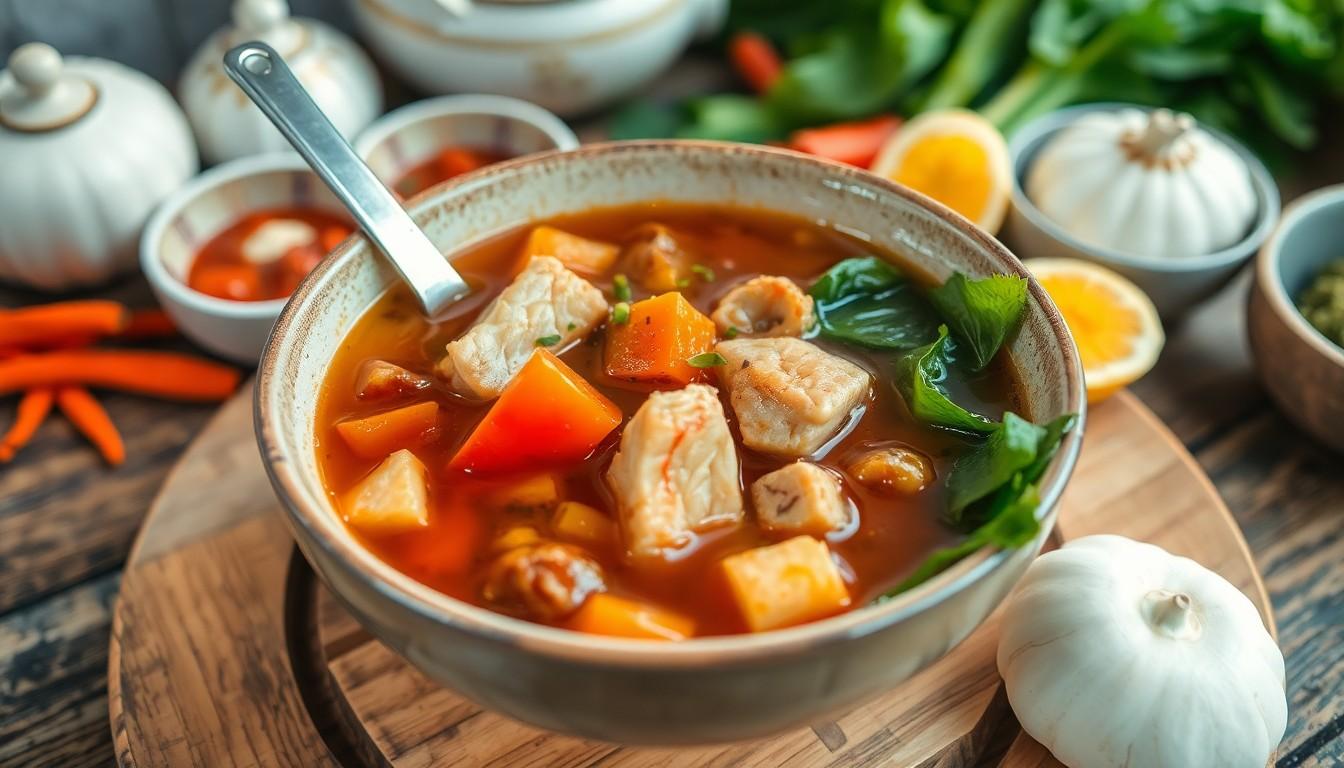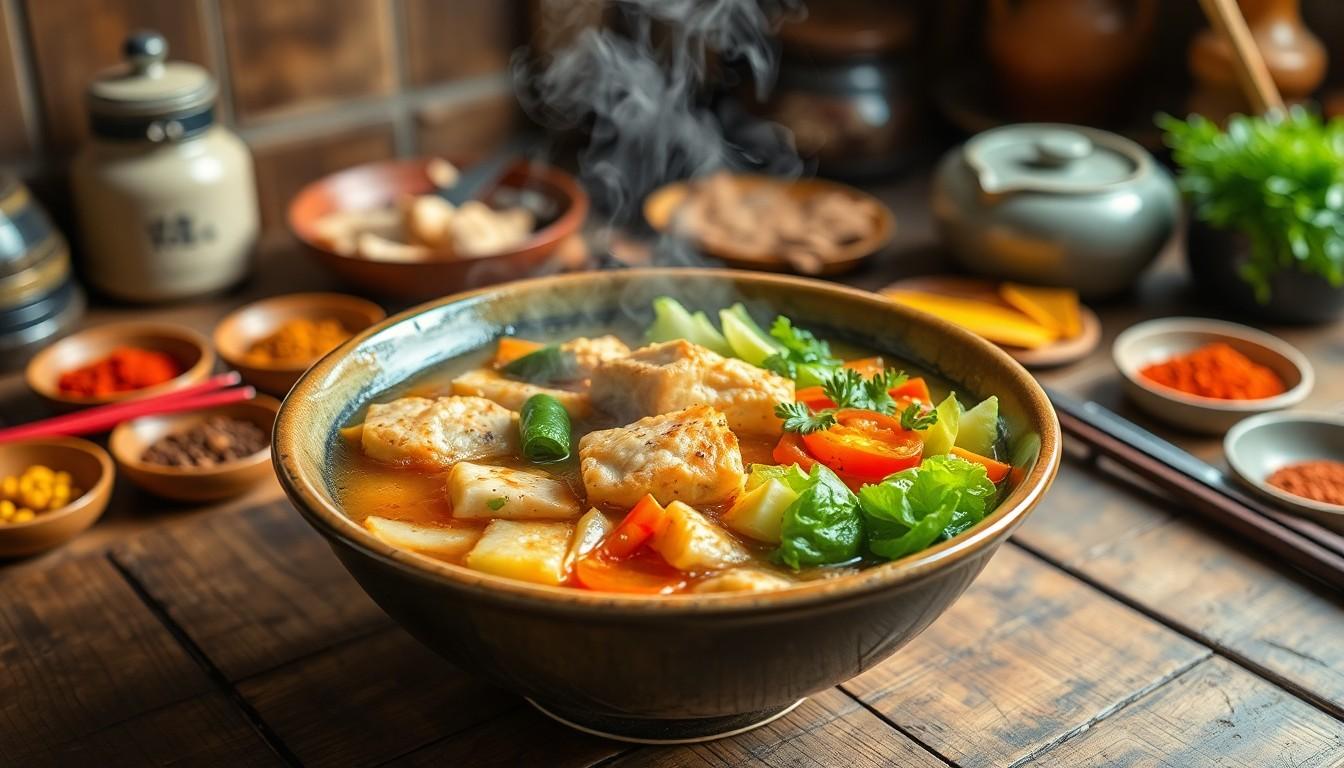Hulgbap might sound like a spell from a wizarding world, but it’s actually a dish that’s got food lovers buzzing. If you’re curious about whether this unique creation leans toward the salty side, you’re not alone. Many have wondered if this culinary delight packs a savory punch or if it’s more on the mild side.
Imagine diving into a bowl of hulgbap, where each bite could either make you crave a glass of water or leave you yearning for more. With flavors that dance on the palate, it raises the question: is hulgbap a salty sensation or a subtle masterpiece? Join the flavor adventure as we explore what makes this dish a topic of debate among food enthusiasts.
Overview of Hulgbap
Hulgbap represents a unique culinary creation that intrigues many food enthusiasts. Exploring its characteristics reveals the distinct flavor and texture of this dish.
What Is Hulgbap?
Hulgbap consists of rice combined with ingredients such as vegetables and proteins. It often features a rich broth that complements the primary elements, enhancing the overall taste. Various recipes may incorporate spices and seasonings, leading to differences in flavor profiles. Some variations focus on saltiness, while others emphasize a milder taste. The versatility of hulgbap offers something for diverse palates.
Historical Significance
The origins of hulgbap trace back to specific cultural traditions, showcasing its importance in regional cuisines. Historical records reveal that hulgbap played a role in communal gatherings and celebrations. Various communities adapted the dish to include local ingredients, reflecting their agricultural practices. Over centuries, the recipe evolved, retaining ties to its roots. Today, hulgbap serves as a testament to the fusion of flavors and culinary heritage.
Taste Profile of Hulgbap

Hulgbap offers a complex flavor experience, with its taste profile ranging from savory to mildly sweet. Saltiness plays a significant role depending on the specific recipe and ingredients used.
Key Flavor Components
Umami stands out as one of the key flavor components in hulgbap. The broth, often rich and savory, contributes to a deep, satisfying taste. Ingredients like vegetables and proteins enhance this flavor profile, balancing the natural sweetness while boosting overall taste. Variations may include added spices, which can introduce subtle heat and aromatic notes. Regional influences also affect flavor, as different areas incorporate local ingredients, leading to diverse interpretations of hulgbap.
Comparison with Other Dishes
Comparison with other rice-based dishes reveals significant flavor differences. For instance, crispy fried rice tends to emphasize a salty, crunchy texture. In contrast, hulgbap’s soft and moist consistency contrasts sharply with these more textured options. While many dishes rely heavily on salt for flavor, hulgbap often balances salty and mild notes seamlessly. Dishes like curry rice present robust spices, whereas hulgbap offers a more harmonious blend of tastes, making it unique in the realm of rice cuisine.
Factors Influencing Saltiness
Hulgbap’s saltiness hinges on multiple components during preparation and ingredient selection. Understanding these factors clarifies why some variations taste saltier than others.
Preparation Methods
Cooking techniques significantly affect hulgbap’s overall flavor profile. Boiling rice in a broth leads to a saltier taste than steaming it. Stir-frying can infuse additional flavors, including saltier profiles from oils and sauces. Slow cooking allows the broth to meld with the rice, enhancing umami notes. Each method shapes the final dish, impacting how saltiness presents during tasting.
Ingredient Variations
Diverse ingredients create unique taste experiences in hulgbap. Many recipes incorporate soy sauce for added saltiness, while others use fish sauce for depth. Fresh vegetables contribute natural sweetness, balancing salty elements. Protein choices, such as pork or tofu, provide different flavor intensities. Regional specialties introduce spices that can enhance or mellow saltiness, reflecting local culinary traditions. Each combination influences how individuals perceive the overall taste of hulgbap.
Personal Experiences and Opinions
Many food enthusiasts share their experiences with hulgbap, particularly regarding its saltiness. Some describe the taste as rich and savory, with many noting that it can vary significantly based on preparation methods and ingredients used.
Taste Tests and Feedback
Taste testers frequently highlight the balance of flavors in hulgbap. Feedback often indicates that some versions exhibit a noticeable saltiness, while others lean toward milder profiles. A group may report their enjoyment of the umami richness from the broth, detailing how it enhances each bite. Ingredients like soy sauce sometimes elevate this saltiness, creating a more pronounced flavor. Variations with fresh vegetables contribute contrasting tastes, making some variations sweeter and less salty. Overall, individual preferences shape the perception of hulgbap, leading to a wide array of reactions.
Cultural Perspectives on Saltiness
Culinary experts explore how cultural contexts influence perceptions of hulgbap’s saltiness. Some cultures embrace salty flavors, crafting dishes that reflect regional preferences and agricultural practices. Families may prepare hulgbap for communal gatherings, emphasizing its adaptability to local taste profiles. Specific regional variations might incorporate distinct spices, enhancing or reducing the dish’s overall saltiness. Traditional practices play a role, as recipes pass down through generations may prioritize certain flavors. Appreciation for these differences leads to diverse interpretations of hulgbap across various communities.
Conclusion
Hulgbap stands out as a versatile dish that captivates food lovers with its diverse flavor profiles. Whether it’s salty or mild largely depends on the preparation methods and ingredients used. From rich broths to the balance of fresh vegetables and proteins, each version offers a unique tasting experience.
The dish’s adaptability to regional preferences further enhances its appeal, making it a staple in communal gatherings and celebrations. As culinary enthusiasts continue to explore hulgbap, the ongoing conversation about its flavor will likely inspire new interpretations and recipes. Ultimately, the perception of hulgbap’s saltiness reflects personal tastes and cultural influences, ensuring its place in the world of rice cuisine.

